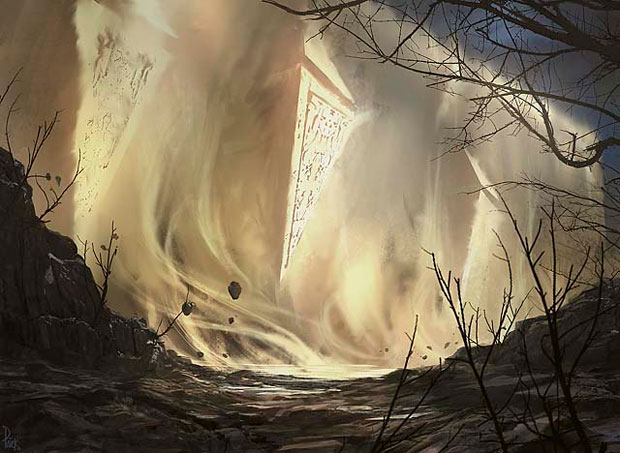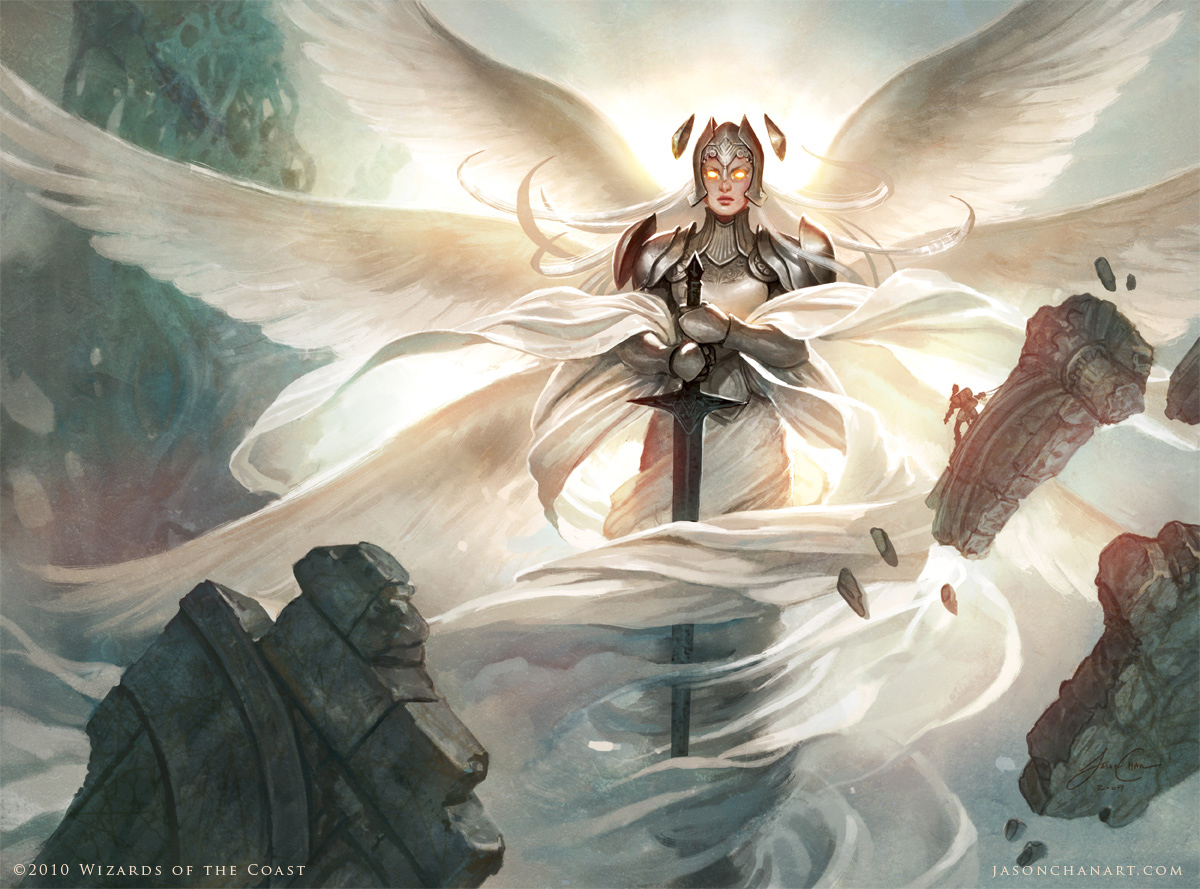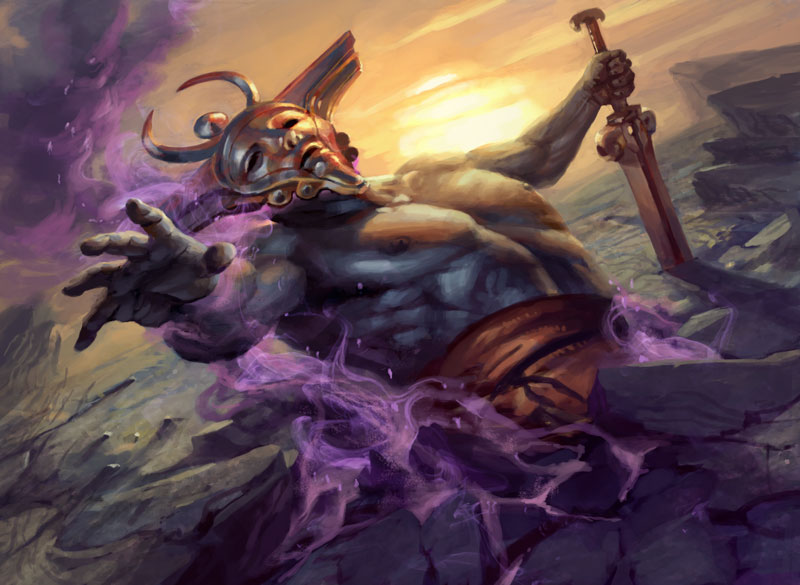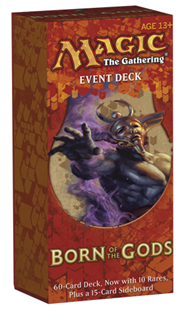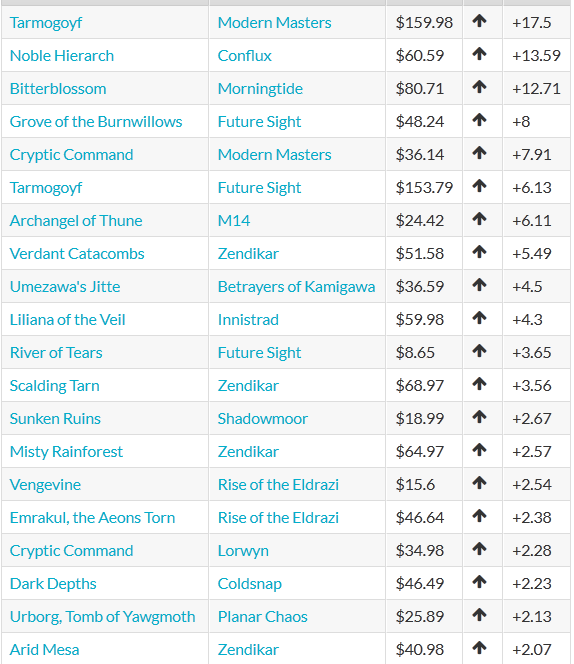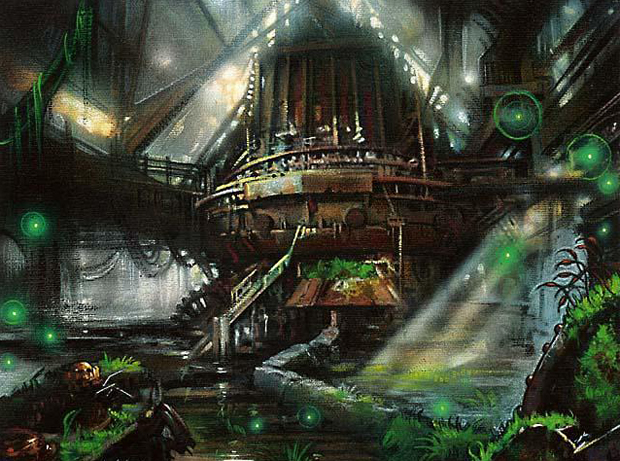By: Jared Yost
Hi all! This week I’m going to skip pro tour coverage (since my articles have to be reviewed a few days in advance of my publication date) and instead focus my article on a topic that I’m sure interests all of you – how do I decide if a card warrants my attention from a financial perspective? This article is going to be a change of pace from my usual format of rattling off individual trending cards that also include minor explanations about what you should do once a card spikes. I am purposely not going to name a single individual card to supplement my reasonings. I don’t want this piece to be a rehash of what I’ve done previously. If I list cards as examples it could influence you in ways that I may not have intended depending on the example. Instead, I am going to give you high level strategies for deciding which cards you should be trying to buy or trade for.
Strategy 1 – Pick a Format and Stick with It
I wouldn’t say that I’m a card price “expert” by any means, but at this point I would say that I have a firm grasp on the concepts that can predict card prices across all of the constructed formats. This is from months of trial and error per format, each time refocusing my efforts on another format to understand the ebbs and flows.
Everyone starts somewhere. I’m sure you have a particular favorite format that you follow extensively and might even be competitive within. That format for me was Legacy. Unfortunately, the constraints of my current position have bound me in terms of actually being able to attend and keep up with Legacy tournaments, however, before I got into the financial side of things I was an avid Legacy player. It was all I ever thought about. The format didn’t bring me as much success as Standard could have (fewer 50+ person tournaments hosted), but I do have a Top 8 to a tournament that I participated in several years back that was hosted in Philadelphia on a college campus that was not DCI sanctioned. In a nutshell, I enjoy following Legacy activity and have a keen interest in the format from that perspective.
Even though my format of choice was Legacy, in retrospect I still feel that it helped my learning curve just as much as starting with Standard would have when I decided to seriously look into Magic finance. Legacy cards have always been expensive. If you are a serious Legacy player, you know that format staples need to be picked up as fast as you can afford them. Sure, the format is occasionally shaken up by new sets, but the core strategies of the format never change. Fast mana is good. A fast lockdown is good. Cards that deal with 95% of the threats in the format are good. And so on. Being able to find a card with these types of effects at a fair price for the card’s general rarity is what you should be looking to do with Legacy.
I had a budget, and needed to stick with that budget in order to finish Legacy decks I was working on. Thus, I learned an important rule of Magic finance – always trade overpriced cards in newer formats like Standard into more stable formats. I would sometimes get pricey mythics and rares that I would receive in drafts and trade them in for store credit. Once I had enough store credit, I would then get another high price Legacy staple. This greatly supplemented my own funds and over time I created a pretty decent Legacy collection. I have seen my Legacy collection, which I haven’t added that many cards to since my heyday, gradually grow into more value than what I paid for it when I first started playing Legacy. The Standard rotation exists where cards will drop in value, but Legacy never rotates.
For those who know Standard well, they knew much more about capitalizing on the rotation than I did when I first delved into card prices. I eventually learned how to approach Standard rotation, yet starting with Legacy wasn’t necessarily a bad thing. I still learned plenty from Legacy prices. Once I grasped the concepts of Legacy finance, it was pretty easy to transfer those lessons to faster changing formats like Standard. If Standard is your starting point, you will have a nice transition to slower formats because you know that once you find something good you can be sure that it will gain value over time.
Trying to capitalize on Magic finance for every format at the beginning won’t work well for you. Once you become very specialized in one area, you can easily shift many of the lessons learned to another and then add the new observations to your existing knowledge. The first step however is getting familiar with the tournament schedule for your format if it is relevant.
Strategy 2 – Know the Rotation and Season Schedule
Cards that interest me can be completely different depending on what time of year you talk to me. Depending on how Wizards schedules their year, you want to make sure that you are interested in cards ahead of schedule before a lot of other players are thinking about the upcoming format or set release.
The most obvious example is that three sets rotate out of Standard at once every fall, four if you include the previous core set. What’s hard is knowing what to do in these situations other than dump rotating staples. You need to think ahead a little bit in terms of what types of decks people will be playing once fan favorites are gone. My strategy in this case is to focus on aggro decks, which are the easiest to pilot in an unknown format due to their more simplistic game plan. I find cards that won’t rotate that fit the profile “cause a lot of damage at a low mana cost” and try to pick them up in anticipation for the first few months of the new Standard season.
In terms of seasons, players will generally not be looking for Modern cards if we are months away from Modern season. Picking up Modern staples during the offseason is a good strategy because you will be able to pick them up at pre-spike prices and ensure you aren’t overpaying for cards during the season that could dip in price once the Modern season is over until next year again.
Of course, at set rotations and during seasons you also want to make sure you follow any Pro Tour coverage that accompanies them.
Strategy 3 – Follow the Pros
Though certainly not possible for everyone, if you have the chance you should watch Pro Tour coverage at the beginning of the seasons so that you know which cards the pros are playing the most. You have to be decisive if you are willing to do this. You have to analyze a lot of results within a short time frame if you want to be able to pick up undervalued cards before they spike. Due to the live streaming matches and the fast paced buying on the internet, hot cards are selling out in a matter of hours. If you have access to Starcity premium, you could try seeing which cards are trending from the various authors discussing their strategy before major tournament weekends.
Trust me, this one takes practice. I get the feeling that pros throw around a lot of misleading information in their articles, especially free ones – they may talk a lot about a deck or their testing with a deck but then play a completely different deck during the tournament. Your best bet is watching live coverage, you can’t hide what is public knowledge at that point. Twitter is also great in this regard. You can keep tabs on trending accounts that don’t have a stake in the success of an individual player or team.
Strategy 4 – Determine the Number of Decks a Card is Played In
Once you know the nature of the format pretty well, the set rotation schedule, the year’s seasons, and what the pros are doing, what next? Well, it’s really just a numbers game. Do the numbers for the card add up in my head?
This strategy is much harder to apply in a format like Standard rather than Legacy, which has a vast library of past and recent tournament results that reveal which cards see play across the most number of decks. In Standard the prices almost always reflect the amount of play the card receives, so no card appears undervalued. Once a card is found to be good in a strategy, or several strategies, the price has already spiked – unless it is a card from the most recent block or set in Standard. These are usually undervalued until rotation, so using what you know from Strategy 2 can help with formulating a plan with this strategy.
Unfortunately with this strategy, card demand these days can sometimes be driven purely by hype and not results. If I see that a card is spiking currently and that it only has one deck that is played in, or even no results outside of an MTGO daily that somebody streamed, I feel much better about missing out on getting them at their pre-spike price. These spikes tend to have a way of settling back down. However, there are two reasons why the card may retain the new price even for several months:
1. Because of the long price memory of players.
2. When a spike happens far enough in advance of a format, we need to wait to see if the hype can hold. (This is true particularly for the upcoming Modern season). The card will retain its price until this time.
In general, if a card is played in two or more decks that have Top 8’s under their belt and there are three to four copies per deck, that really grabs my interest. It will also grab my interest if a lot of hype is being generated about it during a Pro Tour and the deck is performing well within the tournament. I will then check the card’s price and if the price looks good enough for the card’s general rarity and the format I am looking at it would be wise of me to pick up a few copies before others discover how much the card is played.
I have been successful with this strategy from a Modern and Legacy perspective (easy for me to branch out to Modern due to Legacy experience, no rotation makes it easier) but with Standard this strategy is sometimes not as effective.
Why These Strategies?
If I was to describe the four pillars of Magic finance that I use to help guide my card evaluations, I would say these are it. These are the pillars of my financial knowledge that I use to help guide me in decisions I make every day regarding the status of card prices and where they are going.
These strategies aren’t hard and fast by any means, there are always exceptions to any rule. I’ve found that many of the mistakes I’ve made, however, are from directly not following the strategies.
Getting cards because I think they’re cool or will be good in Standard without researching the format. Bad idea.
Getting cards as soon as they come out without taking into regard rotations and schedules. Oh boy…
Getting cards before checking how much actual play they see or have seen in the past. Nope.
Well, you get the picture.
The fact of the matter is, Magic finance is hard. Really hard. I’ve been trying my hand at this for a year and half and I feel like I’m just starting to make headway. It takes a lot of trial and error in order to become even remotely proficient at this. Hopefully my lessons learned, if you will, can reduce your learning curve and make you better at this too.
